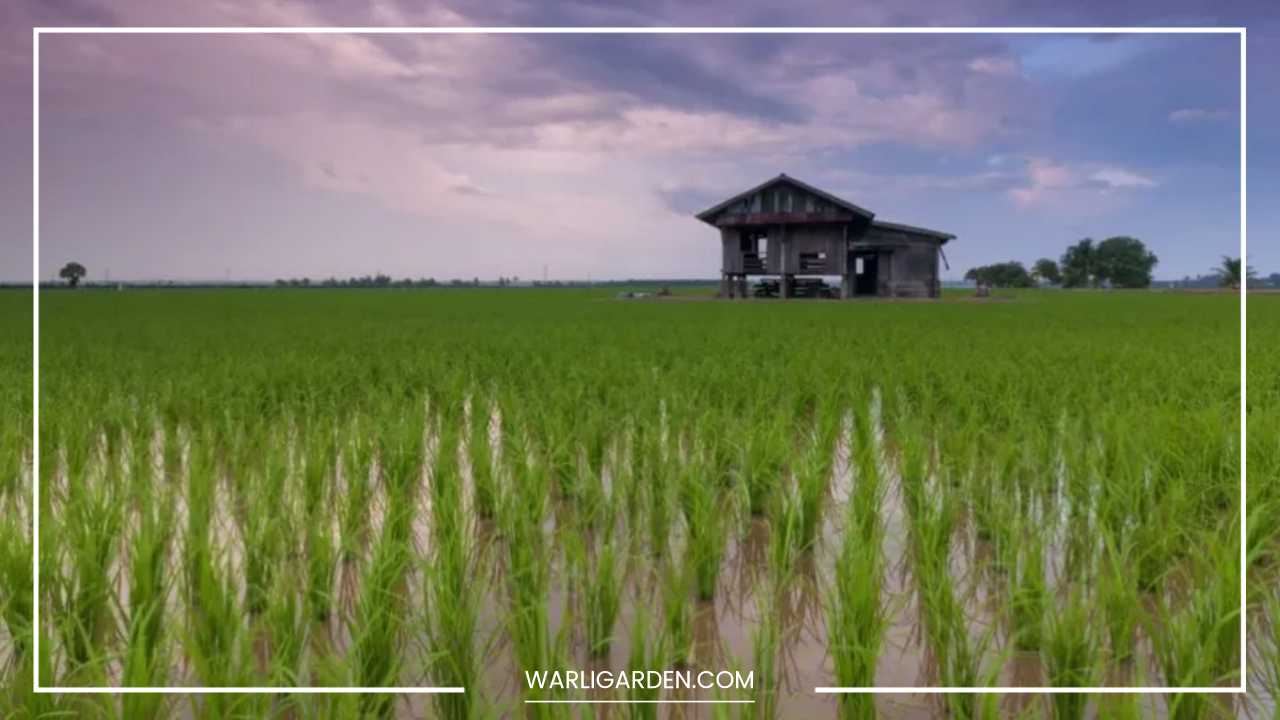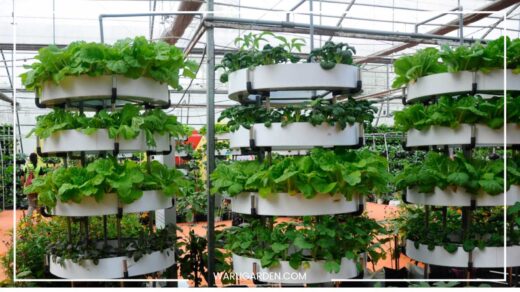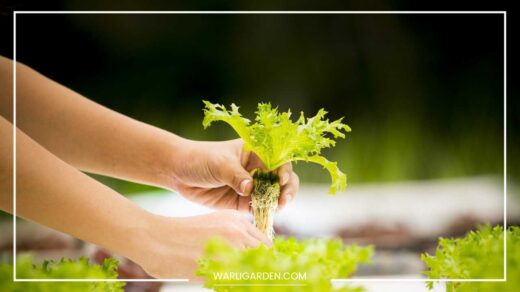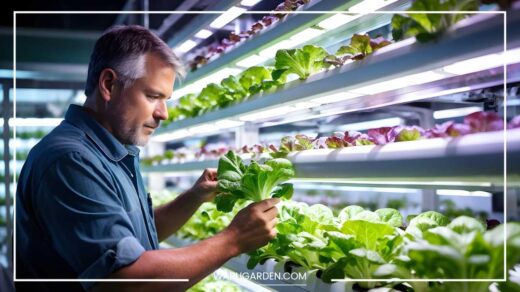What is Open Field Farming?

Open Field Farming
Open Field Farming: A Balancing Act Between Efficiency and Nature’s Wrath
Open field farming, a practice etched into the history of human civilization, remains a cornerstone of global agriculture today. It’s a system where vast stretches of unenclosed land become a canvas for cultivating crops, relying on the sun’s nourishment and the sky’s occasional downpour to nurture life.
While controlled environments like greenhouses offer a high degree of control, open field farming persists due to its inherent advantages.
However, it’s not without its challenges, constantly walking a tightrope between efficiency and the unpredictable forces of nature.
To fully understand this agricultural method, let’s delve deeper, exploring the benefits and drawbacks that define open field farming in the 21st century.
The Allure of Open Fields: Advantages for Modern Farmers
The appeal of open field farming lies in its simplicity and accessibility. Here’s a closer look at the key advantages that make it an attractive option for farmers today:
-
Cost-Effective Startup: Compared to the hefty investments required for greenhouses or sophisticated indoor farms, open field farming boasts a significantly lower entry barrier. Land is the primary requirement, making it an achievable option for new and small-scale farmers. This accessibility is crucial for fostering a diverse and vibrant agricultural landscape, where smaller players can contribute to the overall food supply.
-
Harnessing Nature’s Power: Open fields bathe crops in natural sunlight, the essential fuel for photosynthesis. Rainfall, when it arrives, provides a free and readily available source of irrigation. This reliance on natural elements reduces the need for artificial lighting and irrigation systems, translating to lower operational costs and a more sustainable approach. In an era where environmental concerns are paramount, open field farming offers a way to cultivate crops with a smaller environmental footprint.
-
Scalability for Large-Scale Production: Unlike smaller plots or controlled environments, open fields provide the perfect canvas for large-scale cultivation. This translates to the ability to produce vast quantities of crops, making this method ideal for supplying commercial markets and feeding large populations. This efficiency is crucial for ensuring food security, especially in regions with high population densities.
-
A Symphony of Crops: Open fields offer a stage for a diverse cast of crops. From the towering stalks of wheat and corn to the vibrant tapestry of vegetables like tomatoes and peppers, a wide range of crops can thrive in these environments. This adaptability allows farmers to cater to diverse consumer demands and market fluctuations. By strategically choosing their crops, farmers can optimize their yields and ensure a steady income stream.
-
Building Soil Health: Open field farming, when practiced sustainably, can contribute to healthy soil. Natural processes like decomposition and the action of earthworms break down organic matter, enriching the soil profile. This, in turn, fosters a thriving ecosystem of microorganisms that play a vital role in nutrient cycling and plant growth. However, maintaining healthy soil requires careful management practices, which we’ll explore later.
Nature’s Fury: Challenges Faced by Open Field Farmers
While open field farming offers undeniable advantages, it’s not without its challenges. Farmers constantly face the unpredictable forces of nature, which can significantly impact their yields and livelihoods. Here’s a breakdown of the key disadvantages:
-
Weather’s Unpredictable Hand: Open fields leave crops exposed to the whims of nature. Droughts can parch the land, leaving crops thirsty and stunting their growth. Conversely, heavy rainfall can lead to flooding, damaging crops and potentially causing soil erosion. Strong winds can flatten crops or even uproot them altogether. Extreme temperatures, whether scorching or frigid, can disrupt plant growth cycles and significantly reduce yields. This constant battle with the elements requires farmers to be adaptable and constantly monitor weather forecasts to implement mitigation strategies whenever possible.
-
Pest and Disease Onslaught: Open fields, unfortunately, provide an open invitation to a host of unwelcome guests – pests and diseases. These unwanted visitors can spread rapidly through crops, causing significant damage and reducing yields. To combat this threat, farmers often rely on pesticides and fungicides. However, this approach can have unintended consequences, harming beneficial insects and contributing to environmental pollution. Finding a balance between effective pest control and sustainable practices remains a constant struggle for open field farmers.
-
Soil Erosion: A Silent Threat: Open fields are susceptible to soil erosion, especially on slopes or with heavy rainfall. When left unchecked, this can lead to a loss of valuable topsoil, which is rich in nutrients and organic matter. This not only reduces soil fertility but also diminishes its ability to retain water, creating a vicious cycle of decreased crop yields and increased vulnerability to drought. Implementing sustainable practices like cover cropping (planting crops to protect the soil during fallow periods) and crop rotation (changing the type of crop planted in a field each season) is essential to maintain soil health and long-term productivity.
-
Limited Control: A Farmer’s Dilemma: Unlike controlled environments like greenhouses, open field farmers have less control over the growing conditions. Factors like temperature, humidity, and light exposure become variables dictated by the whims of nature, requiring farmers to adapt their practices and embrace a degree of uncertainty.
Light Exposure: A Balancing Act
Open field farming offers limited control over light exposure, a crucial factor for plant growth. While sunlight is essential for photosynthesis, excessive sunlight can also be detrimental, especially for certain crops.
During particularly hot days, intense sunlight can scorch leaves and hinder plant development. Farmers can mitigate this to some extent by planting shade cloths or choosing crop varieties that are more tolerant of high light intensity.
Technological Advancements: A Beacon of Hope
The challenges faced by open field farmers are not insurmountable. Advancements in technology are offering promising solutions to improve efficiency and mitigate risks. Here are some key areas where technology is playing a transformative role:
-
Precision Agriculture: This approach utilizes data analysis and sensor technology to provide farmers with real-time insights into their fields. Sensors can monitor soil moisture levels, nutrient content, and even track the movement of pests and diseases. By analyzing this data, farmers can make informed decisions about irrigation, fertilization, and pest control, optimizing resource use and minimizing risks.
-
Drought-Resistant Crops: Biotechnology research is developing crop varieties that are more resistant to drought conditions. These crops require less water to thrive, making them ideal for regions facing water scarcity. This not only helps farmers improve yields in dry years but also reduces their reliance on irrigation systems, contributing to water conservation efforts.
-
Improved Weather Forecasting: Modern weather forecasting tools offer more accurate and localized predictions, allowing farmers to anticipate potential weather events and take preventative measures. From hail shelters to adjusting irrigation schedules, early warnings can significantly reduce crop damage and financial losses.
-
Robotics and Automation: The rise of agricultural robots and automation holds immense potential for open field farming. Robots can perform tasks like planting, weeding, and harvesting with greater precision and efficiency than manual labor. This can not only reduce costs but also free up farmers’ time to focus on other critical aspects of their operations.
Sustainable Practices: A Path Forward
While technology offers exciting solutions, sustainable practices remain the cornerstone of successful open field farming in the long run. Here are some key strategies that farmers can adopt:
-
Crop Rotation: Planting different crops in a field year after year helps to replenish nutrients in the soil, disrupt pest life cycles, and suppress weeds.
-
Cover Cropping: Planting cover crops during fallow periods protects the soil from erosion, adds organic matter, and helps to retain moisture.
-
Integrated Pest Management (IPM): This approach combines various methods to control pests, such as using beneficial insects, traps, and targeted applications of pesticides. By minimizing the use of broad-spectrum pesticides, farmers can protect beneficial insect populations and reduce environmental pollution.
-
Water Conservation Techniques: Implementing techniques like drip irrigation or mulching can significantly reduce water usage while ensuring that crops receive the moisture they need.
The Future of Open Field Farming: A Collaborative Effort
Open field farming, despite its limitations, remains a vital source of food production globally. By acknowledging its advantages and adopting sustainable practices alongside technological advancements, farmers can ensure this time-tested method continues to contribute to a secure and efficient food supply for future generations.
Collaboration between farmers, researchers, and policymakers is essential to achieve this goal. By fostering innovation, knowledge sharing, and the development of effective support systems, we can ensure that open field farming thrives in the face of 21st-century challenges.
In conclusion, open field farming is a complex dance between efficiency and the forces of nature. While it offers advantages like cost-effectiveness, large-scale production, and the ability to harness natural resources, it also comes with challenges like unpredictable weather, pest and disease outbreaks, and soil erosion.
However, through advancements in technology, a commitment to sustainable practices, and collaborative efforts, open field farming can continue to be a cornerstone of global food security for generations to come.
The Socioeconomic Impact of Open Field Farming: A Look Beyond the Field
The impact of open field farming extends far beyond the boundaries of the fields themselves. It plays a significant role in shaping the social and economic fabric of communities and regions. Here’s a closer look at some key aspects:
-
Rural Livelihoods: Open field farming provides a vital source of income for millions of farmers and agricultural workers around the world. It contributes to rural development by creating jobs, supporting local businesses, and fostering a sense of community. However, the economic viability of open field farming can be precarious, with factors like volatile market prices and unpredictable yields impacting farmer livelihoods.
-
Food Security and Accessibility: Open field farming plays a crucial role in ensuring food security, especially in developing countries. By producing staple crops like wheat, rice, and corn, it contributes to a stable food supply for local populations. However, factors like climate change and population growth can disrupt food production patterns, making it essential to improve the resilience and efficiency of open field farming systems.
-
Environmental Impact: While open field farming offers some environmental benefits, like building soil health through sustainable practices, it can also have negative consequences. Excessive use of pesticides and fertilizers can pollute water sources and harm beneficial insects. Additionally, deforestation to create new fields can disrupt ecosystems and contribute to greenhouse gas emissions. Implementing sustainable practices and promoting responsible land management are crucial to minimize the environmental footprint of open field farming.
-
Consumer Choices and Market Trends: Consumer preferences for organic, locally-sourced produce, and concerns about food safety are influencing open field farming practices. Farmers are increasingly adopting sustainable and organic methods to meet consumer demands. Additionally, the rise of farmers’ markets and community-supported agriculture (CSA) programs is creating a more direct connection between farmers and consumers, fostering a sense of transparency and trust within the food system.
A Glimpse into the Future: Embracing Innovation for a Sustainable Future
As we look towards the future of open field farming, innovation and adaptation will be key. Here are some potential areas of development:
-
Vertical Farming: This approach utilizes vertical structures to grow crops indoors, offering a potential solution for limited land availability and the need for more controlled environments. While currently more expensive than open field farming, advancements in technology could make it a more viable option in the future.
-
Genetically Modified Organisms (GMOs): While GMOs remain a controversial topic, some argue that they can offer benefits for open field farming. Crops engineered for drought tolerance or pest resistance could improve yields and reduce reliance on pesticides. However, the potential environmental and health risks associated with GMOs need to be carefully considered and addressed through robust regulations.
-
Big Data and Artificial Intelligence (AI): As data collection and analysis capabilities continue to evolve, AI can play a transformative role in open field farming. By analyzing vast datasets on weather patterns, soil conditions, and crop health, AI can help farmers make informed decisions about planting, irrigation, and pest control, optimizing resource use and improving yields.
Final Thoughts: Open Field Farming – A Balancing Act for a Sustainable Future
Open field farming is a practice steeped in history, yet constantly evolving to meet the challenges of the 21st century.
It offers a unique blend of efficiency, scalability, and a connection to the natural world. However, it also faces significant challenges, from unpredictable weather patterns to the need for sustainable practices that protect the environment.
By embracing technological advancements, fostering collaboration between stakeholders, and prioritizing sustainability, open field farming can continue to be a vital source of food production for generations to come.
As we move forward, the key lies in finding a balance – one that ensures food security for all while protecting the delicate ecosystems that sustain us.


